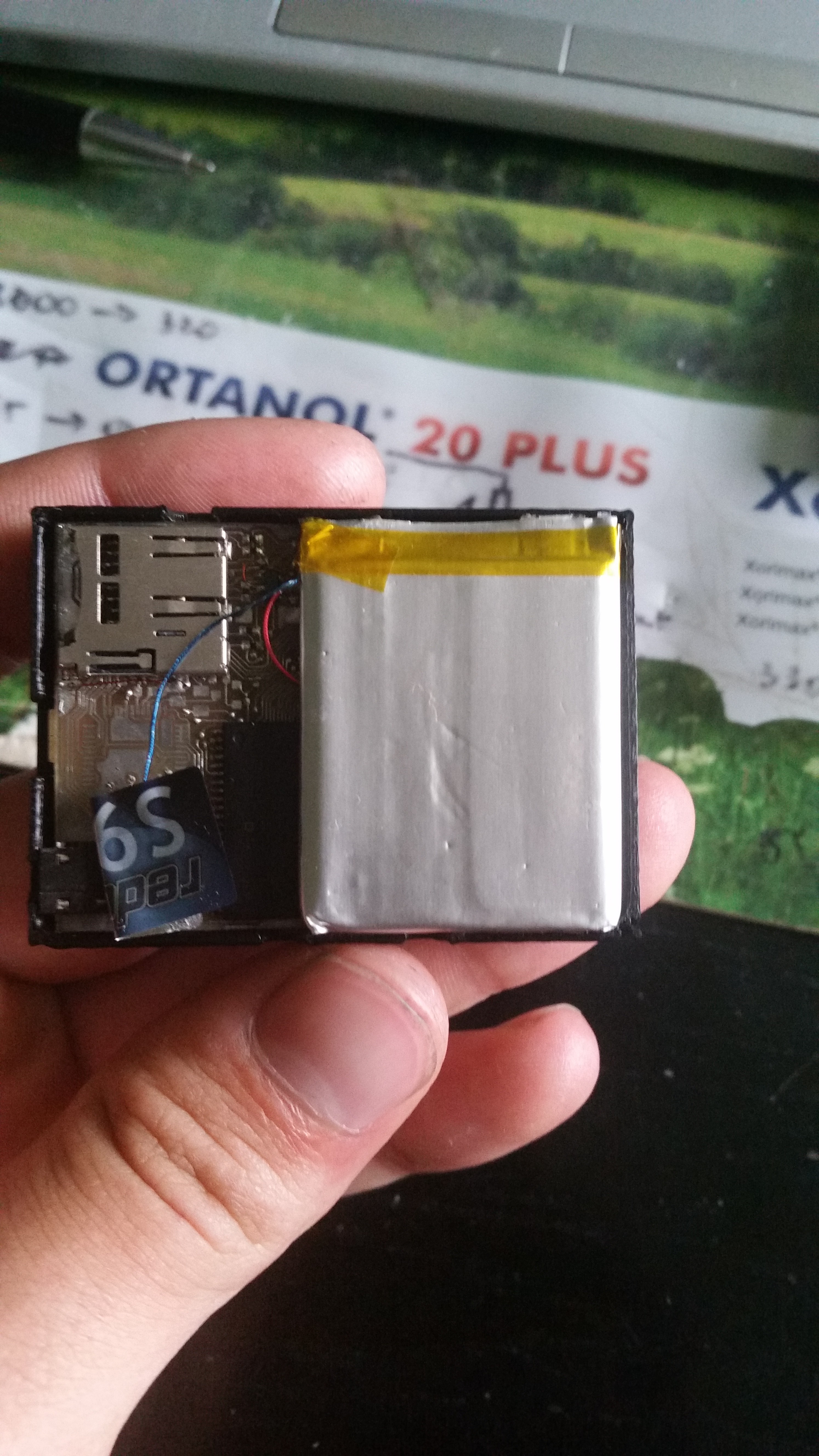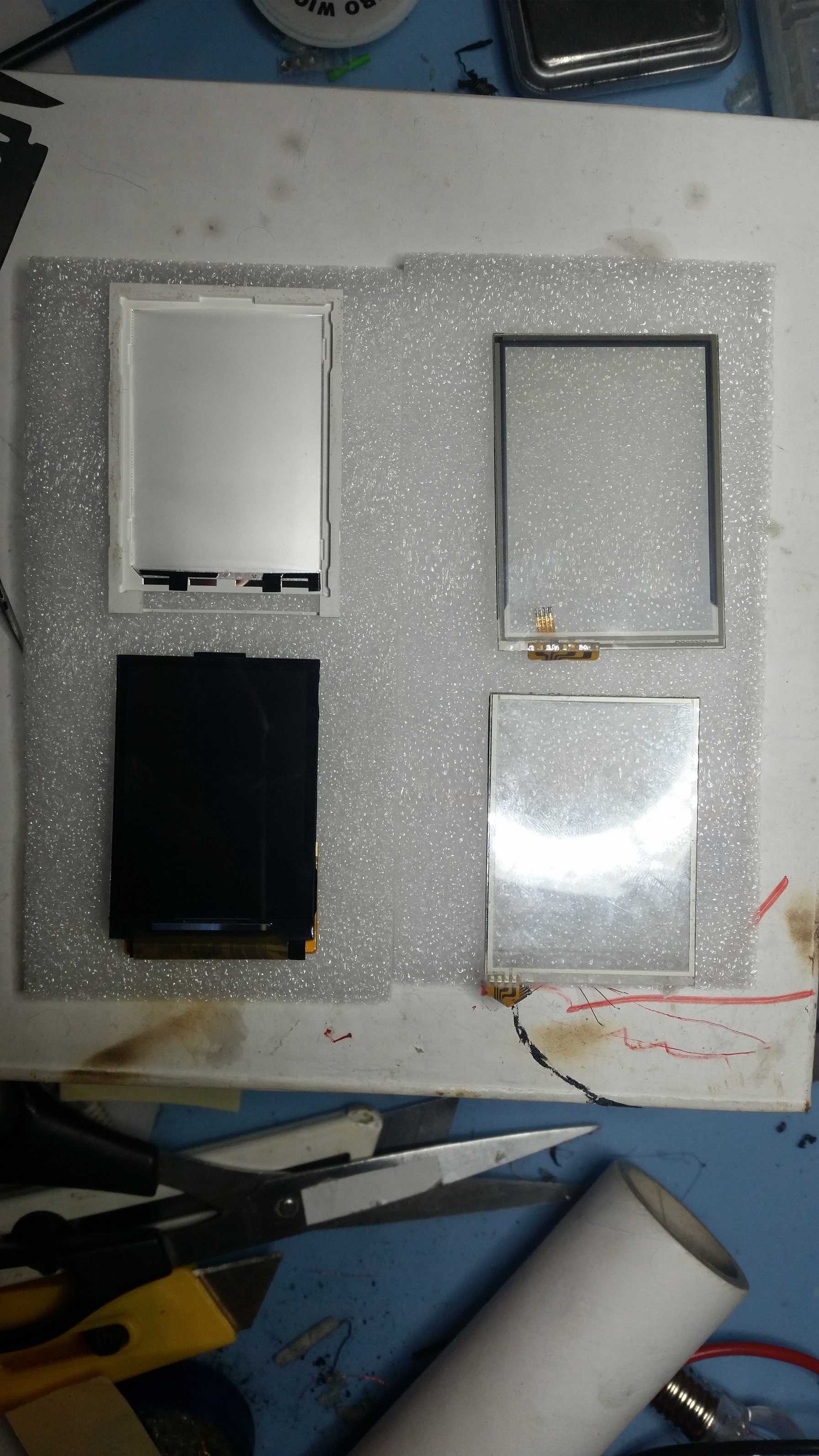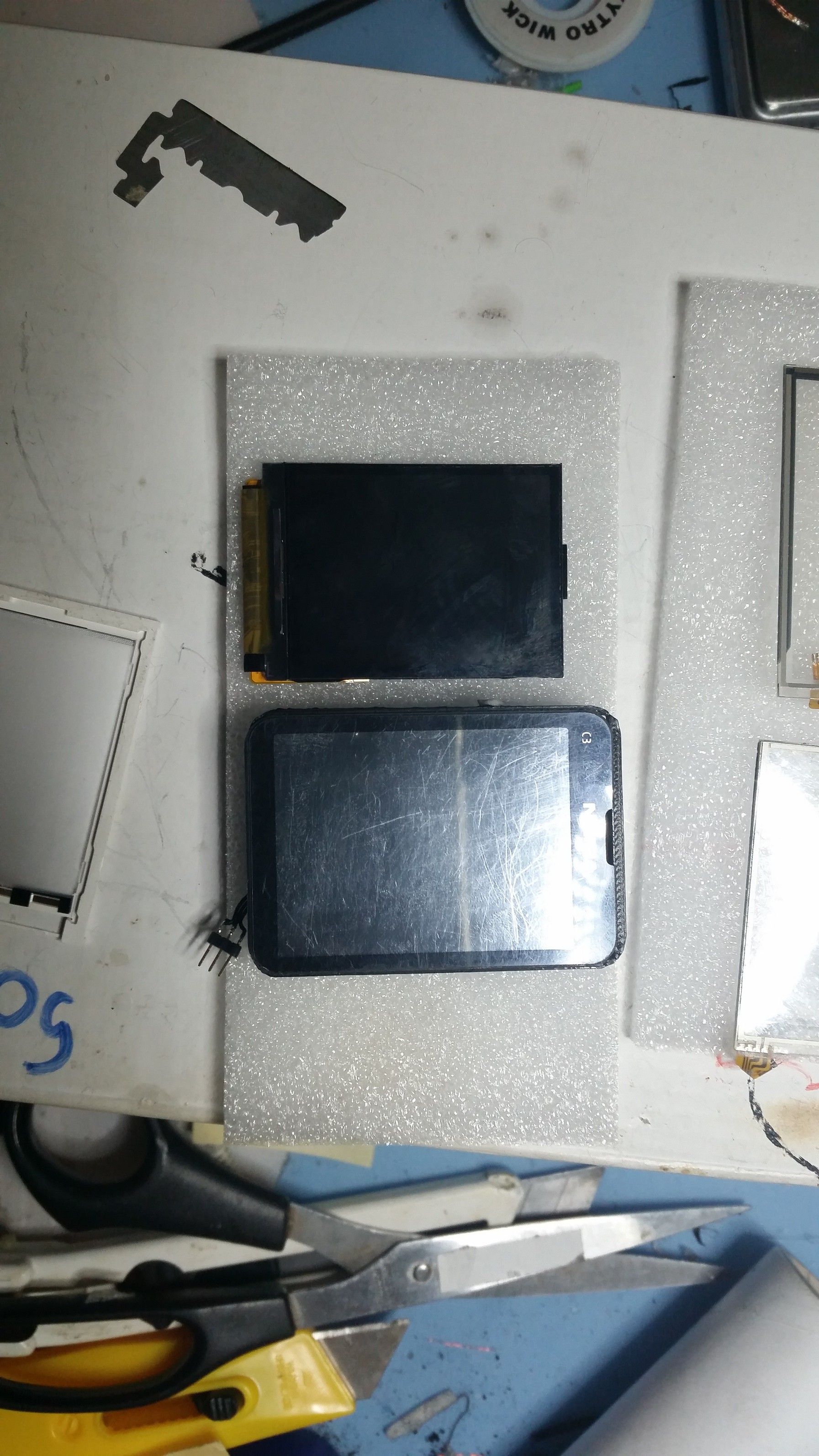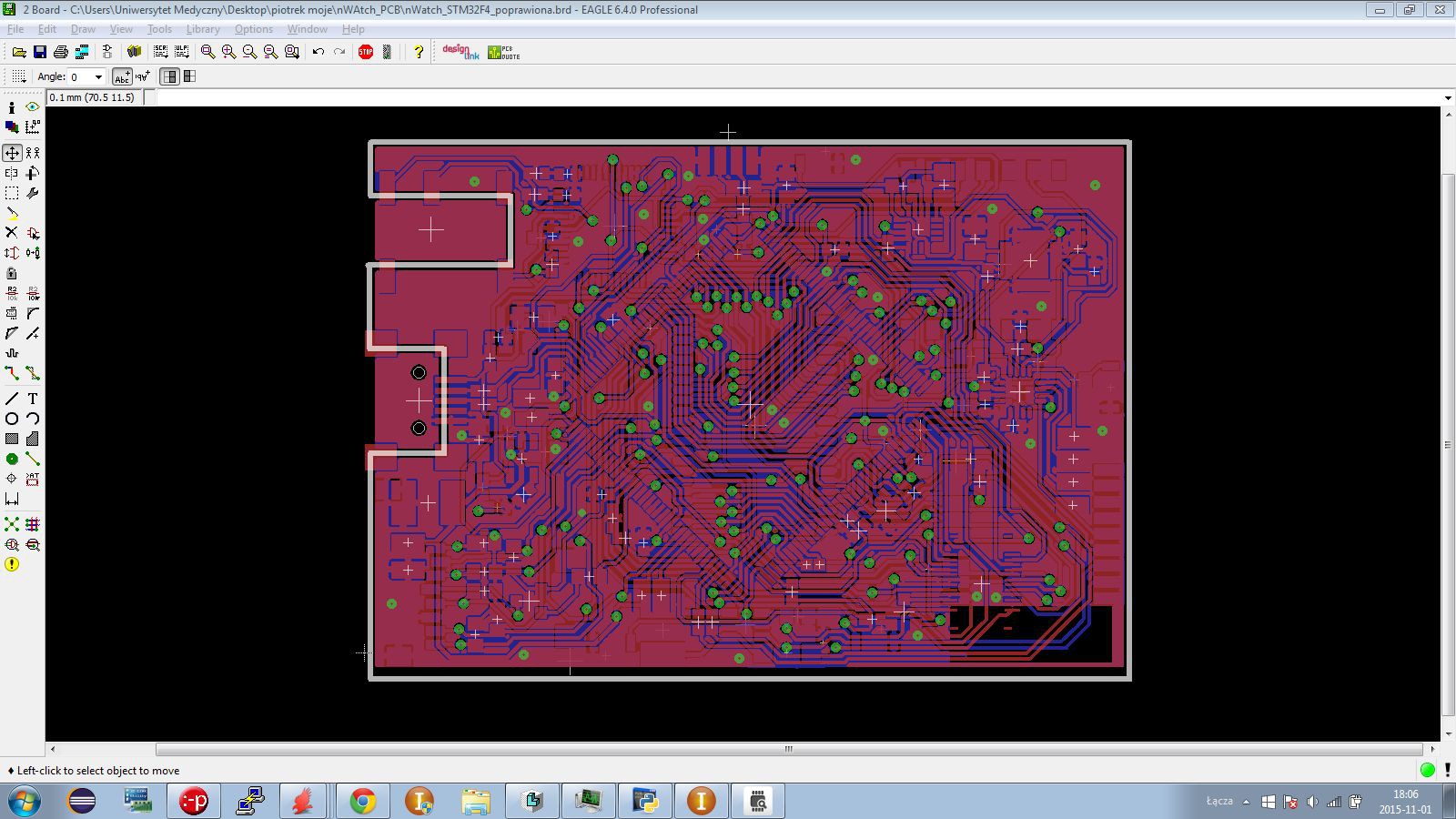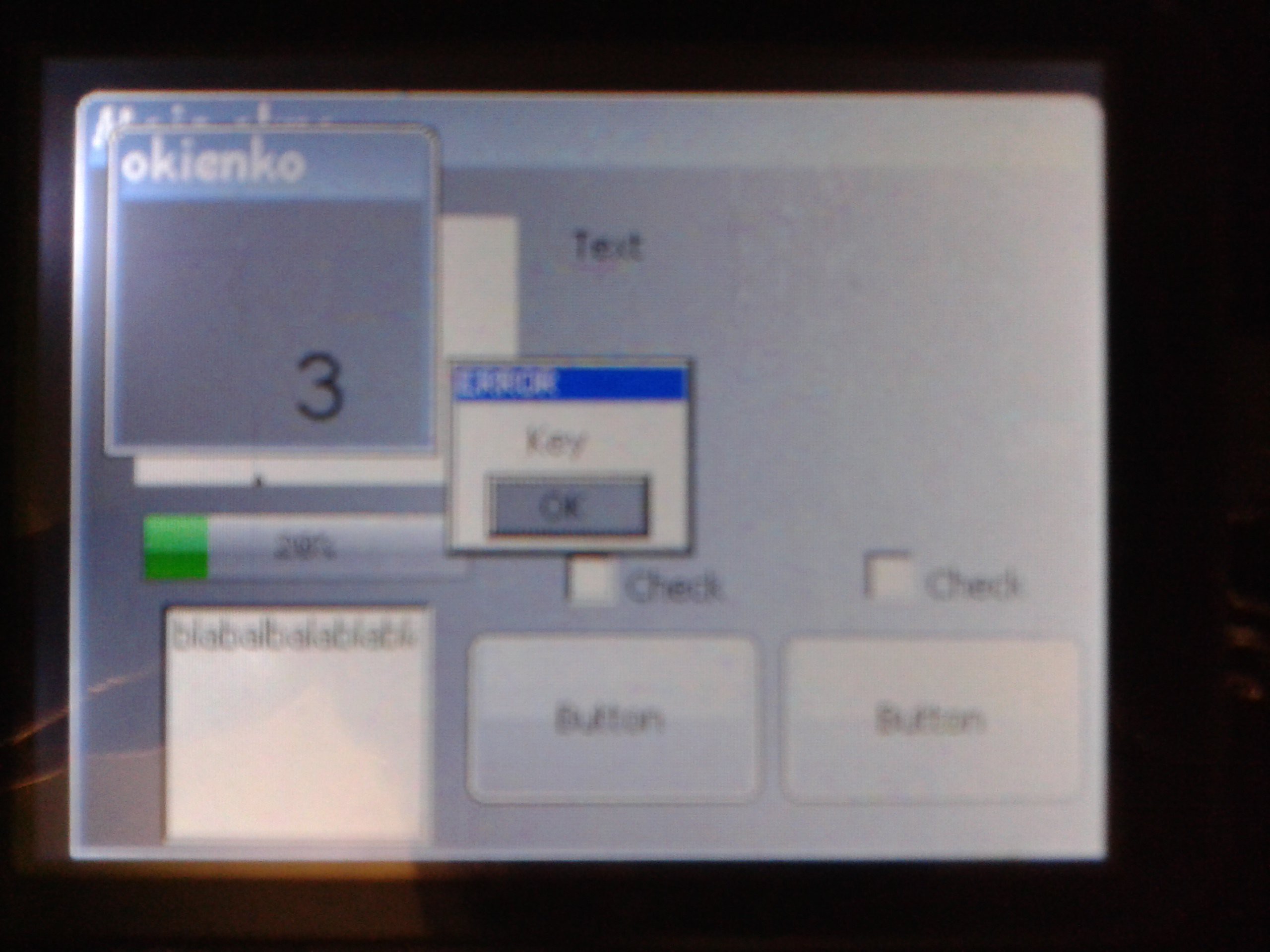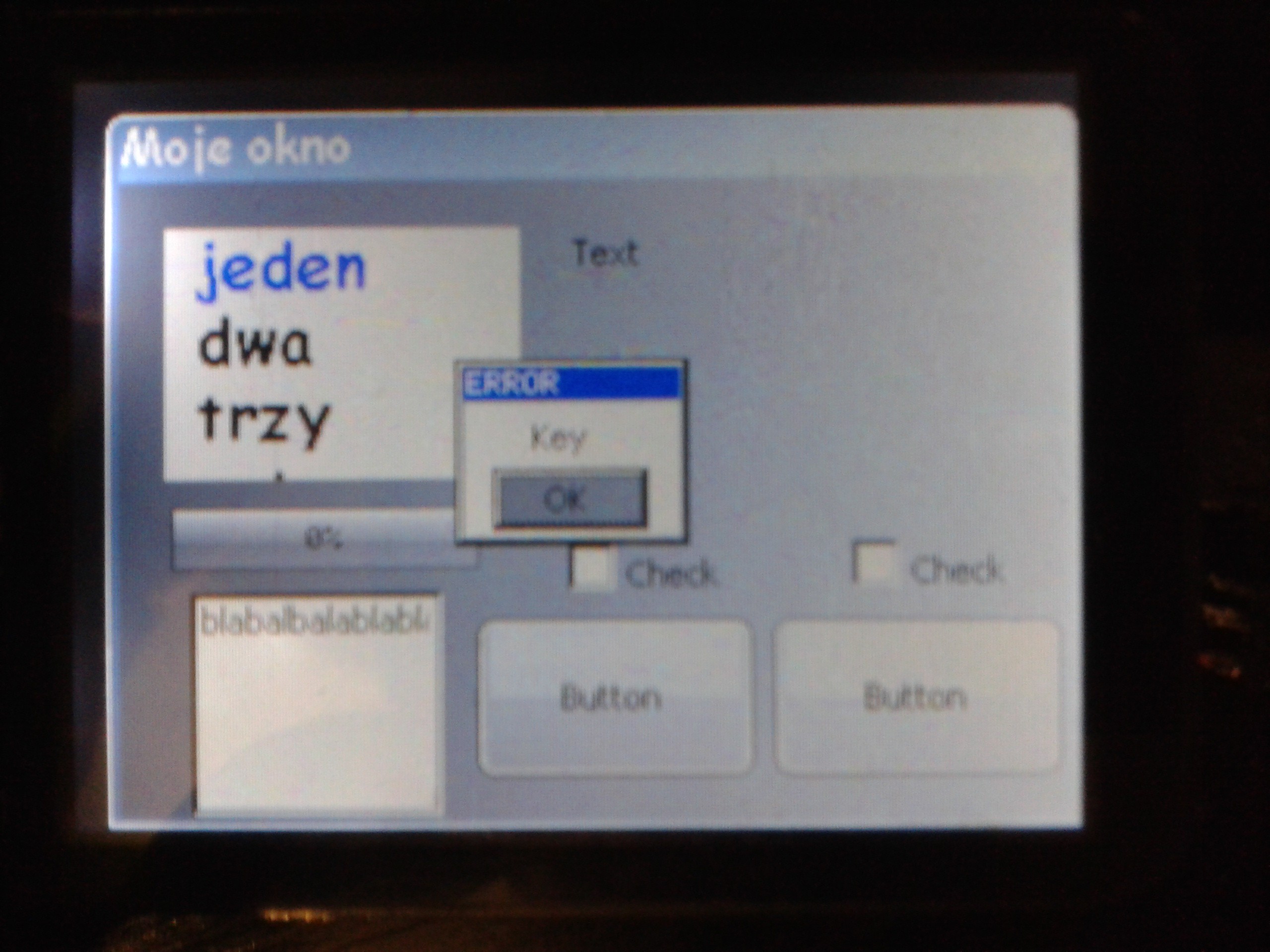-
Your opinions & quick form
01/14/2017 at 11:28 • 0 commentsHi!
As the project is being prepared with Elector for publishing I would like to ask you for a favour. I need some feedback about my project, things that sould be changed etc. I cannot see all the drawbacks of the project, but hopefully you can ;) Some of the questions are solely for people that are familiar with STM32 ( due to the fact it is the main processor in nWatch). However I care about all the opinions about nWatch, not only from stm32 enthusiasts.
The link to the form :
https://goo.gl/forms/ycd15whv2H2RbxAW2
And nWatche's project page on Elector website :
https://www.elektormagazine.com/labs/nwatch-build-and-program-your-own-smartwatch
Thank you all in advance,
Peter.
-
Succes on Electronica 2016
11/25/2016 at 09:55 • 0 commentsHi !
Finally found some time to write a log. On november 8-11 I've visited Munich to take part in the electronica fast forward award contest. It was the first edition, but suprisingly well organised. After three days of presentations from three different categories ( startup, prototype, idea) nWatch won 3 place in prototype category. I was so excited to see that someone really appreciated my work. Now it's possible that nWatch will be developed by a team, not me alone. That's a great news !
Regarding the project itself. Everyday I fix some bugs, hardware and software as well. I've made an android app for bluetooth conectivity, to update the clock, and will work on notifications. Besides I've created a nice menu, and a new case. As usual I'll post some photos:
![]()
![]()
![]()
![]()
-
nWatch on electronica Fast Forward Award
10/04/2016 at 21:24 • 0 commentsHi!
I'm very happy to say that nWatch made it to the last round of the electronica fast forward contest, and is going to be present at electronica Trade fair in Messe München on november 8-11. It's a great news that someone is actually interested in backing the project. I'm considering making a comercial product, because with their support that might be possible.
Also You'll be able to see nWatch on Maker Fair in Rome, but this time on Motee's (https://hackaday.io/project/6661-motee-the-motor-controller-reinvented) booth. We're going to show the new motee together ;) I'll take nWatch with me so if You're interested You are welcome to visit.
That's all about the events, and for now I'll only upload a photo of the inside of another ( newest) nWatch :
![]()
-
Another version of nWatch
08/28/2016 at 23:44 • 0 commentsThis time You'll probably laugh at me, beacuse I'm quite a hesitant person when it comes to pick up a proper display for my watch. Yes I've returned to the nokia 6300 lcd. Why ? Because it's much better visible in the sun, it has a nice connector, is eaisly avaliable, cheap and as it turned up not that slow even on the 8-bit wide bus. Additionaly it's smaller and perfectly fits to the 2" touch screen.
And You know what ? I'm really happy with that decision. I've made a new PCB ( during te vacation in the evenings ) and when I came back home I put everything together. It took me about a month or so, but it was worth it. Now I can wear it on my wrist, and that's a real motivation to improve firmware.
New features I've added :
- fixed the one button startup - when it's turned on it comsumes about 80mAh, which is a great amount of current but when it's asleep ( the main 3.3v converter is off) it consumes about 0.3 mAh ( the internal RTC and MPU6050 continues to work).
- added a startup by moving the watch. It's based on the MPU6050 and it's internal DMP
- fixed the USB mass storage. This feature worked only in the first verision, as it turned out due to the length of traces ( they cannot be very long or you have to use a usb filter)
- the case is only 11.8 mm high. Great outcome considering the previous watch ( non - touch ) was 15mm. I hope I can achieve 10mm when I buy a thinner Li-po and make the PCB on a 0.7mm laminate ( not 1.5 mm ;P ).
As usual some photos an a video :
![]()
![]()
Now I realised how big is that project is. But I'm going to finish it...![]()
SOON :)
Peter.
-
Quite a break !
07/03/2016 at 14:08 • 0 commentsHi all!
Hmmm it seems that I've forgotten about the project on Hackaday... Sorry about that.
I had a lot of stuff going on, and not much time to take care of nWatch. Now we have vacation period, so I'm going to do my best to finish ( or just improve) actual shape of the device. I wasn't lazing actually and today I want to show You the results. I have put together the smaller ili9320 lcd, smaller pcb, and it all seems to work well. The biggest challenge was the touch screen. I couldn't use nokia's panel, because it was too big. I decided to order a few 2" panels from aliexpress. They look very nice but need, in comparison to nokia, a lot of force to detect a touch. That's really anoying and is on the 1st place on my "to do " list.
Except that I've made a new case and the wrist belt handle. Now it's time for some photograps and films:
![]()
![]()
There's how the mounting works :
And the button to turn on the device ( button not a switch ). Now I can turn it on using a switch and turn it off even using a menu's option ( in this case "counter" )
The case
![]() The PCB ( as You can see there were several mistakes which I had to fix using the cables ;) )
The PCB ( as You can see there were several mistakes which I had to fix using the cables ;) ) ![]()
![]() Baterry placement
Baterry placement![]() Hope You enjoyed this log, and stay tuned for more ;D
Hope You enjoyed this log, and stay tuned for more ;D Peter.
-
nWatch - new shape
02/27/2016 at 23:36 • 0 commentsHello !
I did as I promised ;) Now te watch has a 2,2 ili lcd, and so far I'm really happy with it. Though I didn't make the BGA pcb, because I found it unnecesarry - with the foto pcb making method I was albe to make the paths thinner, and so the board got smaller. I added the one button on/off feature. One thing I'm hesitateing on is the touch panel. I ordered four 2" touch panels from aliexpress, but they need quite a force to detect a touch - in contrast to the nokia one. So far I decided to use the nokia touch, but I'm going to cut it a bit.
Regarding the software - currently I'm making a app for a bike counter. Also I have to design a movable case. I want to be albe to swap it between the bike and my wrist as quickly as possible ;)
Soon I'll post some pictures showing the progress ;)
See You all !
Peter.
-
Changes in the project
01/09/2016 at 21:17 • 0 commentsHello !
I can imagine it's been a while since I last wrote, but I'll try to make it up in this entry.
Since last time I've made some major changes. I decided to use ILI9320 lcd ( which
is at my place, and soon 'll be tested), also I'll buy an 2,2" touch panel for this
display. I was very unhappy to make this change in the project, but it was necessary
to keep the watch in good shape. Honestly these nokia's lcd's are slow, have only 8
bit parallel bus, and what is very annoying - almost impossible to see in the sun (
maybe I got the chinnese version :P ). Besides that they support only 24bit/pixel
colour depth and the sizes are 2,4" ( too big for a wristwatch) and 2,0 " ( too
small to make a PCB, and I couldn't find the matching touch panel).
I've also decided to use stm32f429 in bga package as well as the SRAM memory. That means I have to make an 4-layer PCB ( "make" is not the good word - "order" would be better - I'm not crazy :) ). New microcontroller gives me new features such as Graphic accelerator and higher core freqency.
Though I didn't stop creating the firmware. I kept the promise and made a menu with an MP3 player “app”. As You are able to see in the video the songs are picked randomly, using the STM's random number generator. The whole MP3 app is a bit down, but it's going to be fixed soon .
The menu runs on FreeRTOS, and of course Stmwin library is used. In
the video You can see the unbelievable features of this LIb, for instance smooth
scroling, without flickering. The memory fot Stemwin is allocated on external SRAM
and is almost as fast as the internal memory.
Yesterday I managed to run Bluetooth 4.0, and now I'm going to take care of communication between the watch and the smartphone.
One more thing I have to tell You about. That is the Freertos Trace - a very helpful
software while developing a RTOS application. It shows You the timings, priorities
and tasks in graphic way. The demo version is enough for basic purposes.
Now it's time for some pictures and videos ;) .
![]()
In the left top corner the original case of the 2.2' lcd ( making the real dimensions like it was 2,4" ), next to it on the right a 2,4" touch panel ( sold with 2,2" lcd ) on the bottom the LCD I want to put, and the 2,2" touch.
![]()
comparison of the new display and actual nWatch.
Regarding the video that you're about to see - the colour of the menu is so yellow due to fact that library cannot support 24 colour depth using the MEMDEVICE mechanism, which handles the flickering ( so for now I have to use 16bit/px).
Till next time,
Peter.
-
Update
12/06/2015 at 15:37 • 0 commentsHi !
I've not forgotten about the project, don't worry :) .
During this long time I've been absent, I've made a new PCB, managed to run the SRAM memory, and made an MP3 player which randomly picks songs. As You can see that's not much, but I can work on the project only in the evenings, if I have some time left. I plan to make a low-power mode, but that's quite hard to do, while having so many peripherals onboard. I've been thinking of adding a power managment chip, to be able to control the current during a complete shut down. Another feature is small voltage divider used to measue the battery voltage.
I had some problems while trying to talk to MP3 decoder - vs1053. It sometimes wouldn't turn on, and sometimes it was working just fine. I resoldered it once or twice, but it didn't help. I also checked all the paths, and voltages, wired up a logic analyser. I still couldn't find the bug. While reading a VS forum I discovered that I was missing a 1Mohm resistor between quarts paths. When I soldered it, the device started working as it supposed to ;)
I've also created a repository on Github, to find out about Git system. You can see the code here :
https://github.com/klonyyy/nWatch
See You soon !
-
Time for some sounds
11/01/2015 at 17:08 • 0 commentsHi !
Hope You all still remember my project ;) . It took so long since I've last written, because I had to change the pcb - I decided to use 16 bit fsmc bus to communicate with SRAM memory. Besides that I struggled for about a week to run the mp3 hardware decoder. At the begining I thought I burned the chip, because I mistaken and read vs1003 datasheet not vs1053. Their core voltage differs quite much - its 2,5v for vs1003 and 1.8 (1.85 max) for vs1053. Thankfully I managed to run a simple sine test. When an hour later I could hear an wav file played by my watch I was very excited. Then I decided to play an MP3 file. Problems started right away. The decoder was hanging and changing the volume by itself. That was the moment when all the excitement has gone away. I spend a few evenings trying to guess what's wrong, and today I managed to solve the problem. I lowered the core voltage from 1.95 to 1.8v. It started working without any hanging etc. Now I'm planning to play a while with this decoder (sound for the video ? ) , and when I receive new PCB I'll try to make internet radio or something simillar, just to test wifi module ;) .
Here's a screenshot of the PCB, just to show that I'm not lazing ;)
![]()
If You're intrested in building nWatch, You just have to wait a bit longer. I need some time to make sure that there are no bugs in the latest pcb. Then I'll upload all the pcb and schematic files, so that everyone can build version with SRAM, or without it .
-
Graphics again...
10/11/2015 at 19:10 • 0 commentsI'm sorry for not writing for that long, but I have a lot of stuff going on right now. Doesn't mean I find no time for the watch, though. During this time I made some changes in the software part of the project. I decided to use Stemwin for certing graphics such as icons, menus, lists, buttons. It's really flexible so it fits my expectations. What's more important it handles the alpha channel, reading from the display, so I don't have to worry about wiping out the screen after I display something. On the pictures below You can see my test apps made with Stemwin.
![]()
![]()
Another feature of this lib is that it's able to decode jpeg, png anf gif images. However displaying these images may be quite slow if You don't find a way to display them using DMA transfer not pixel-by-pixel. I'm sure it's possible, but the decode process of jpeg file took to long for my video purposes. That's why I decided to give libjpeg another try. I succeded this time. It turned out that this lib allocates big memory blocks on the stack. The sollution was to increase the stack. Now when It's fully functional I have about 20 FPS. I think it can be higher if I spend some time on it.
Here's a video of a video ;)
I decided to use FreeRTOS in my project. I think it's another step forward. I know it's not going to be easy to develop a fully functional device with FreeRTOS for a newbie like me. Till now I managed to run FreeRTOS with 2 tasks, one main, and one for the graphics refresh ( background).
I'll try to write more often, but I cant promise that. Hmm that's all for this log, I guess. See You !
 Peter Wasilewski
Peter Wasilewski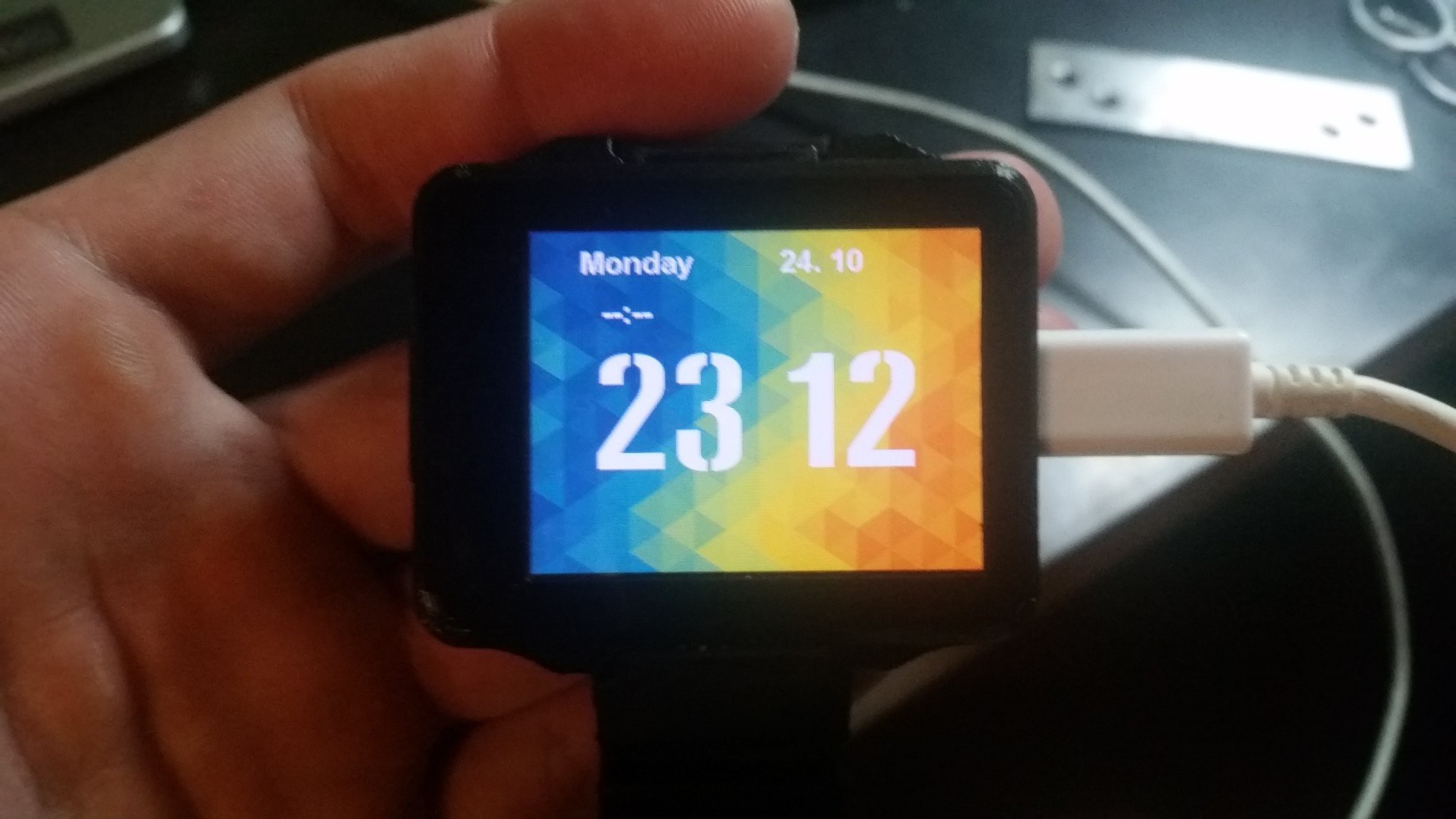


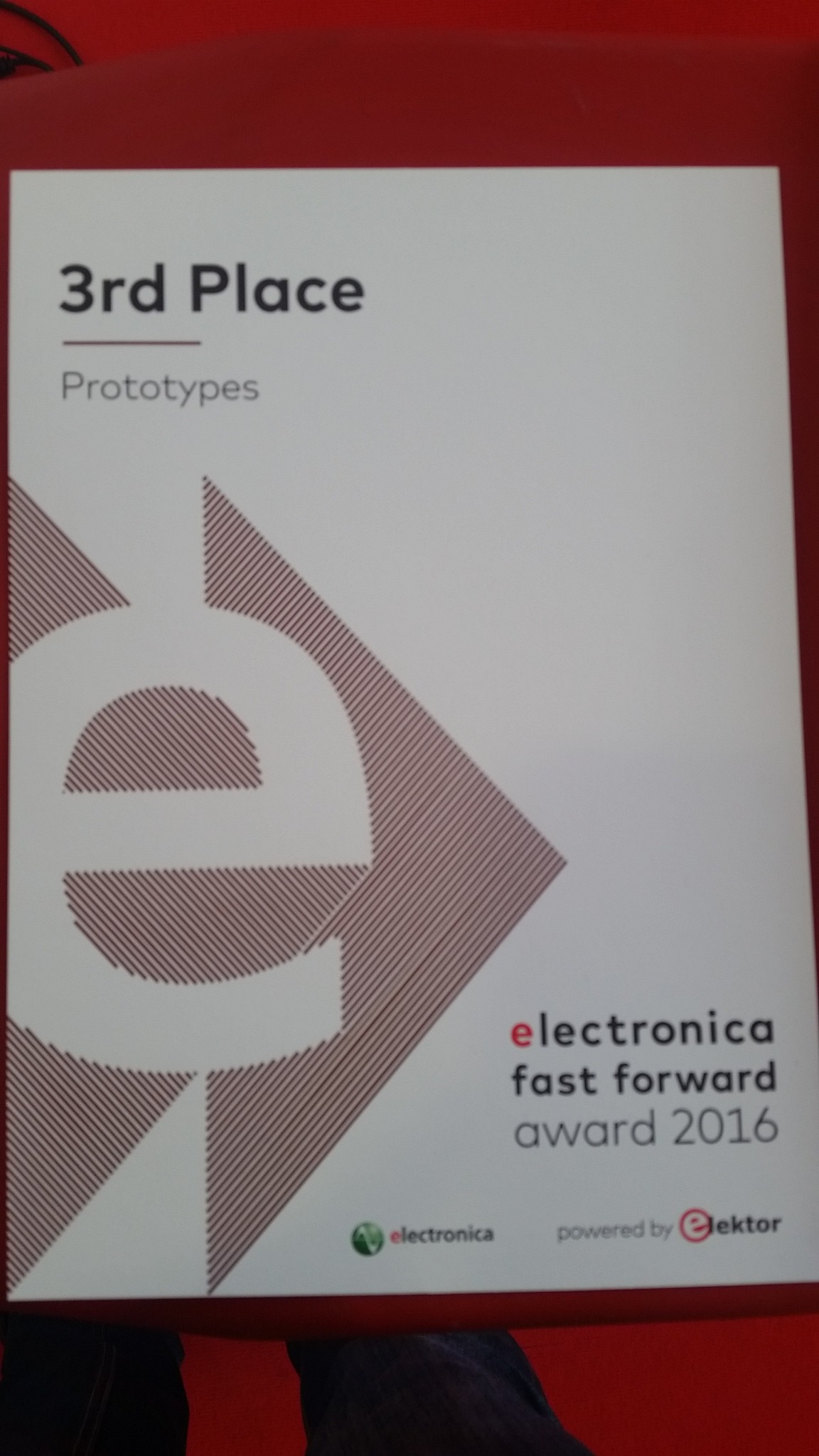
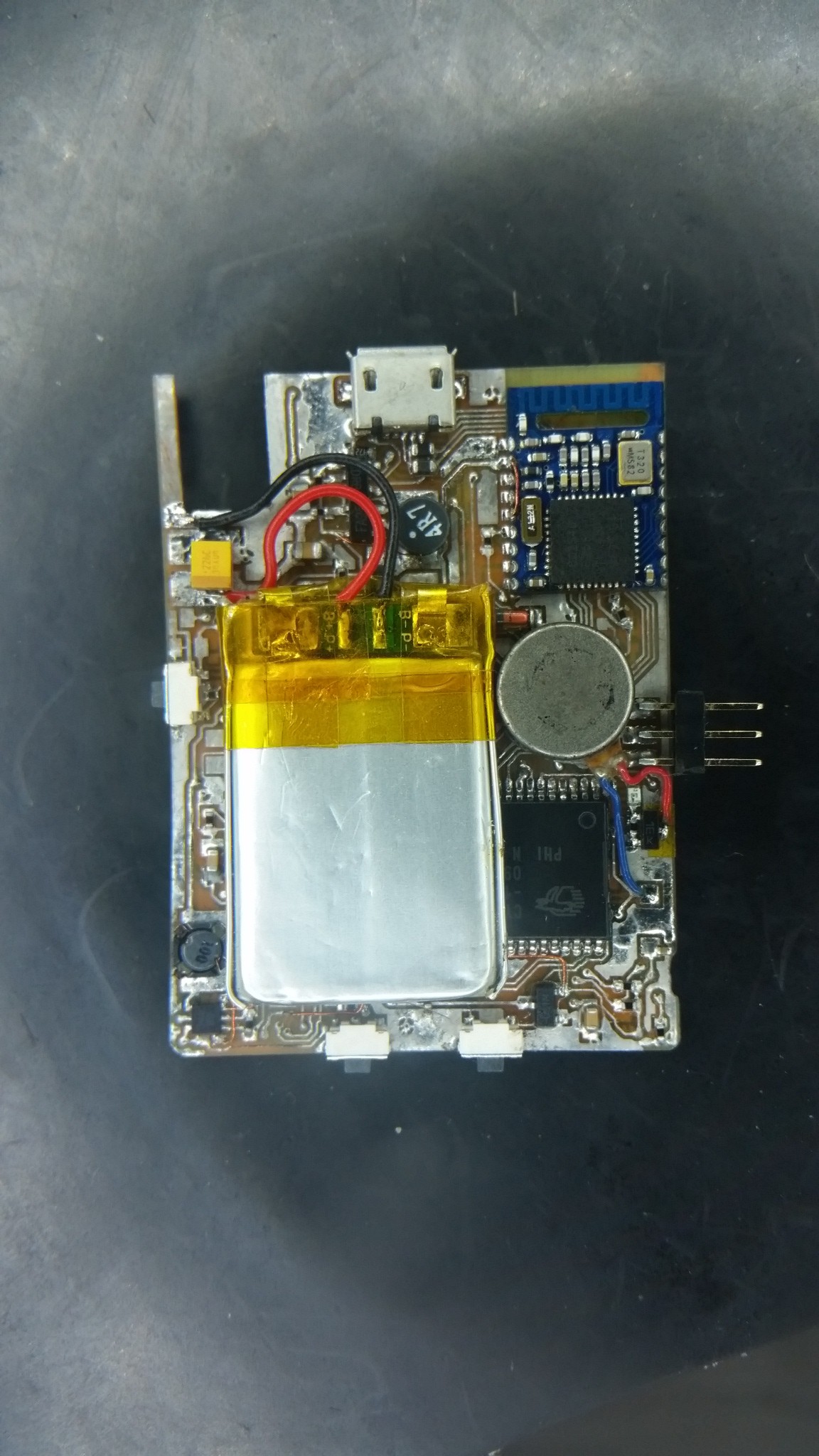
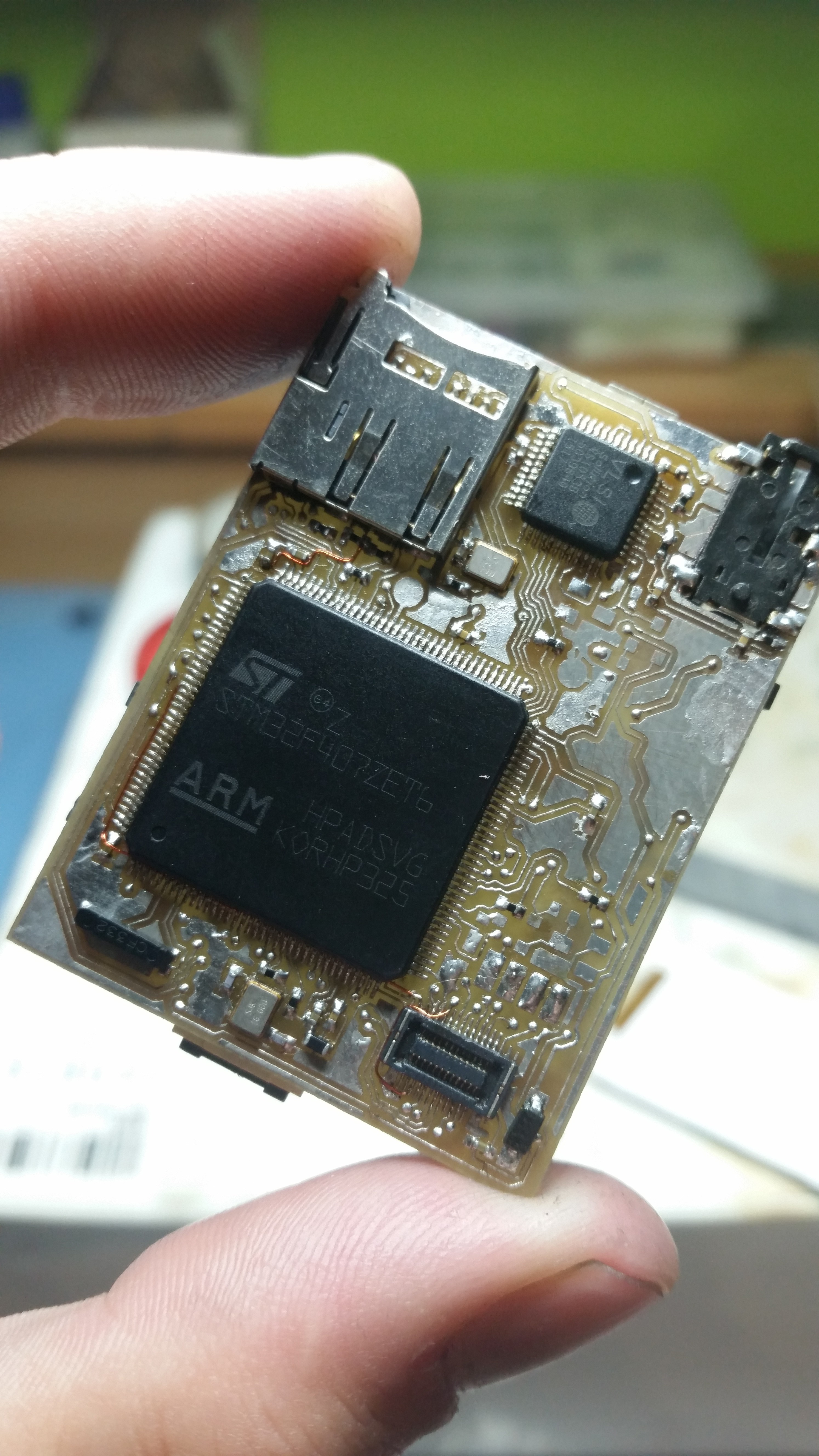
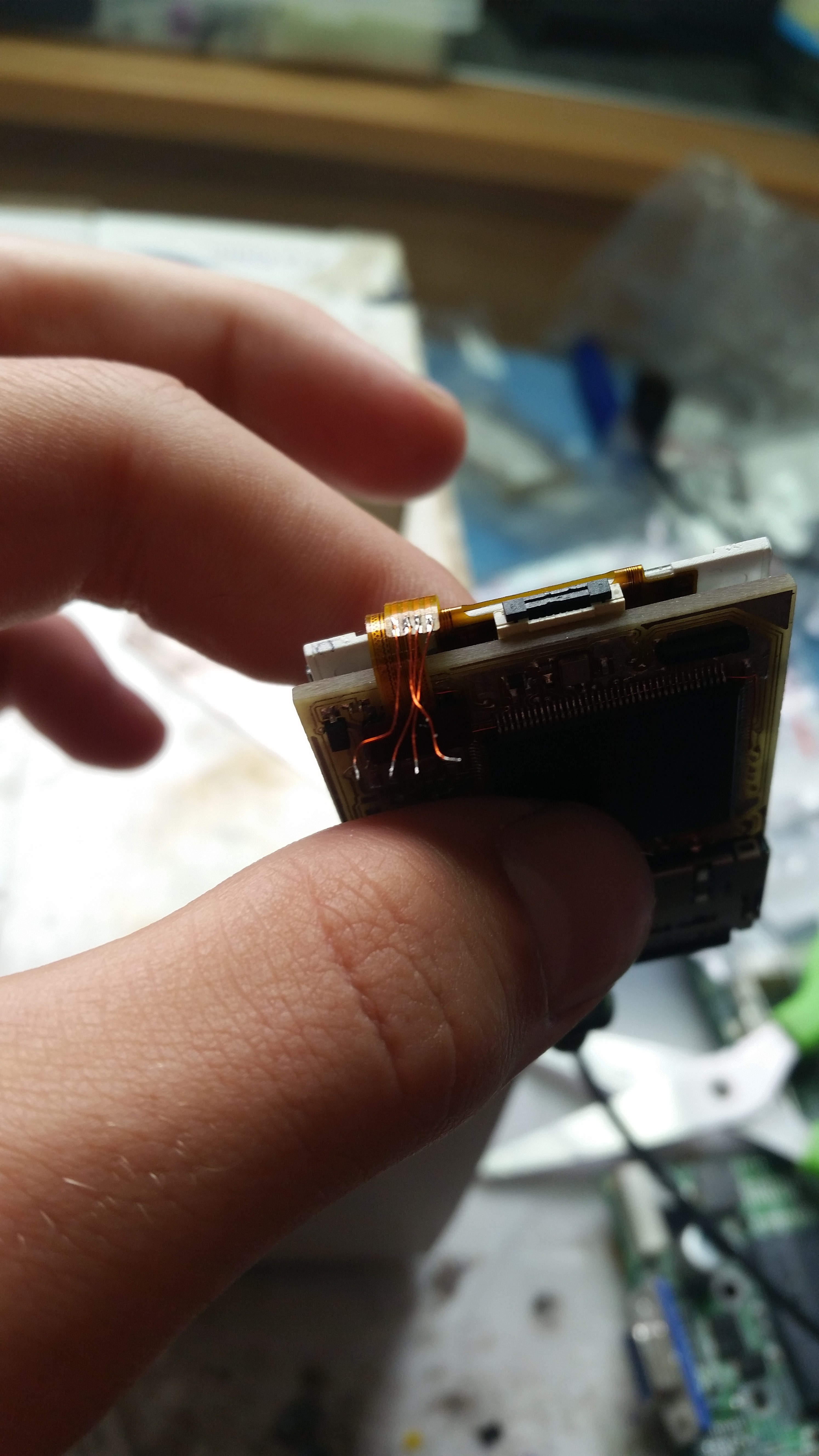
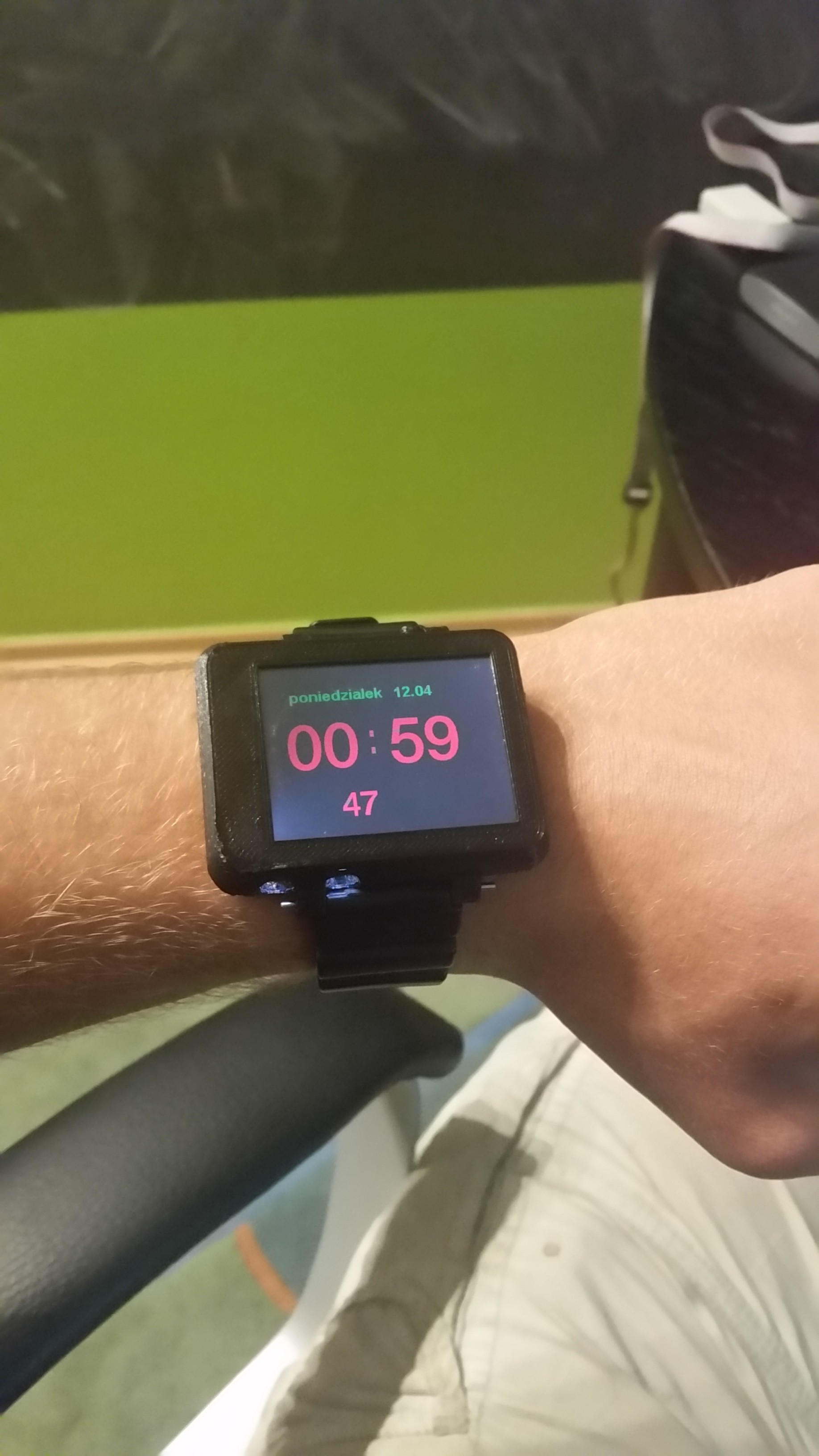
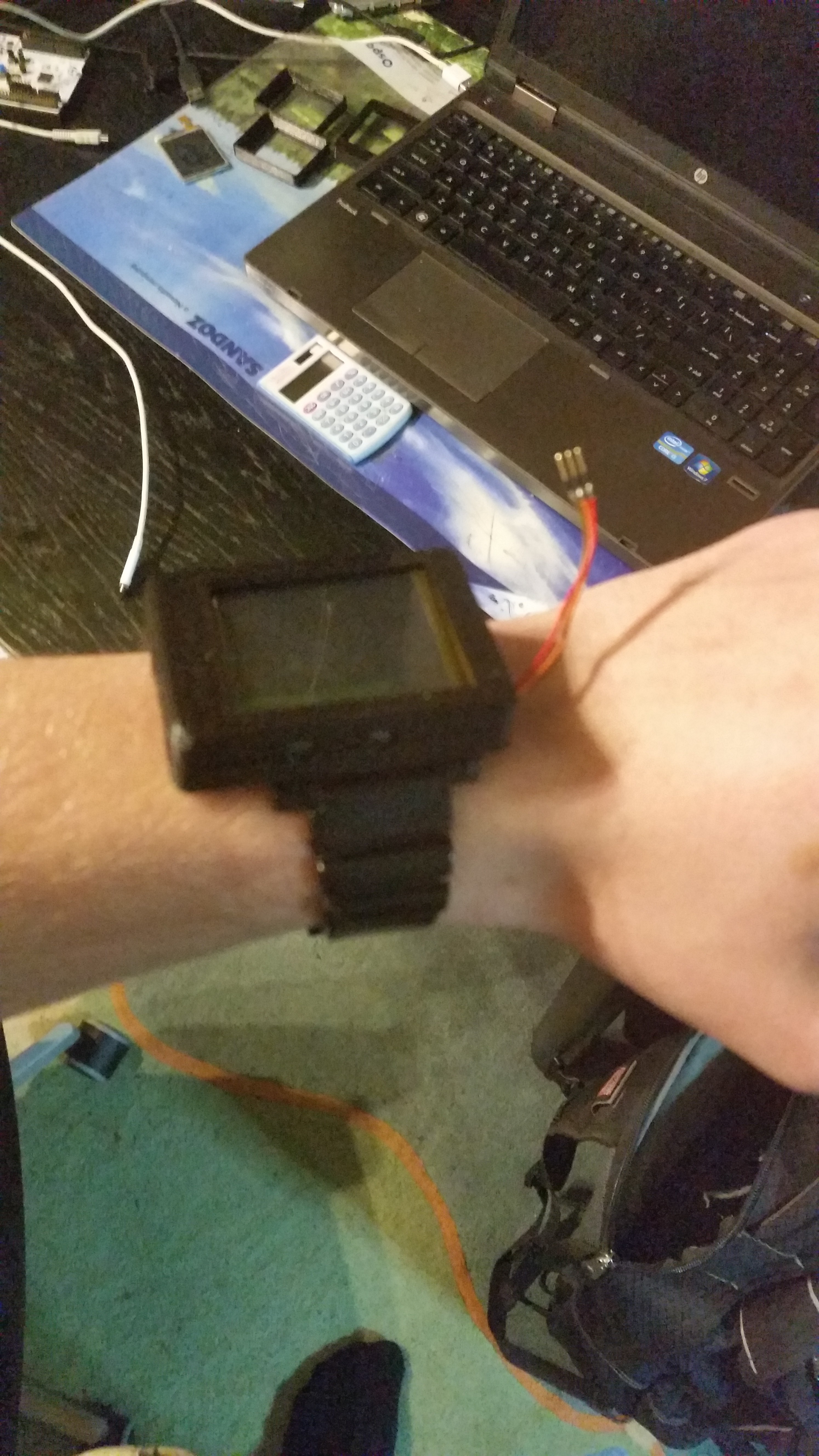
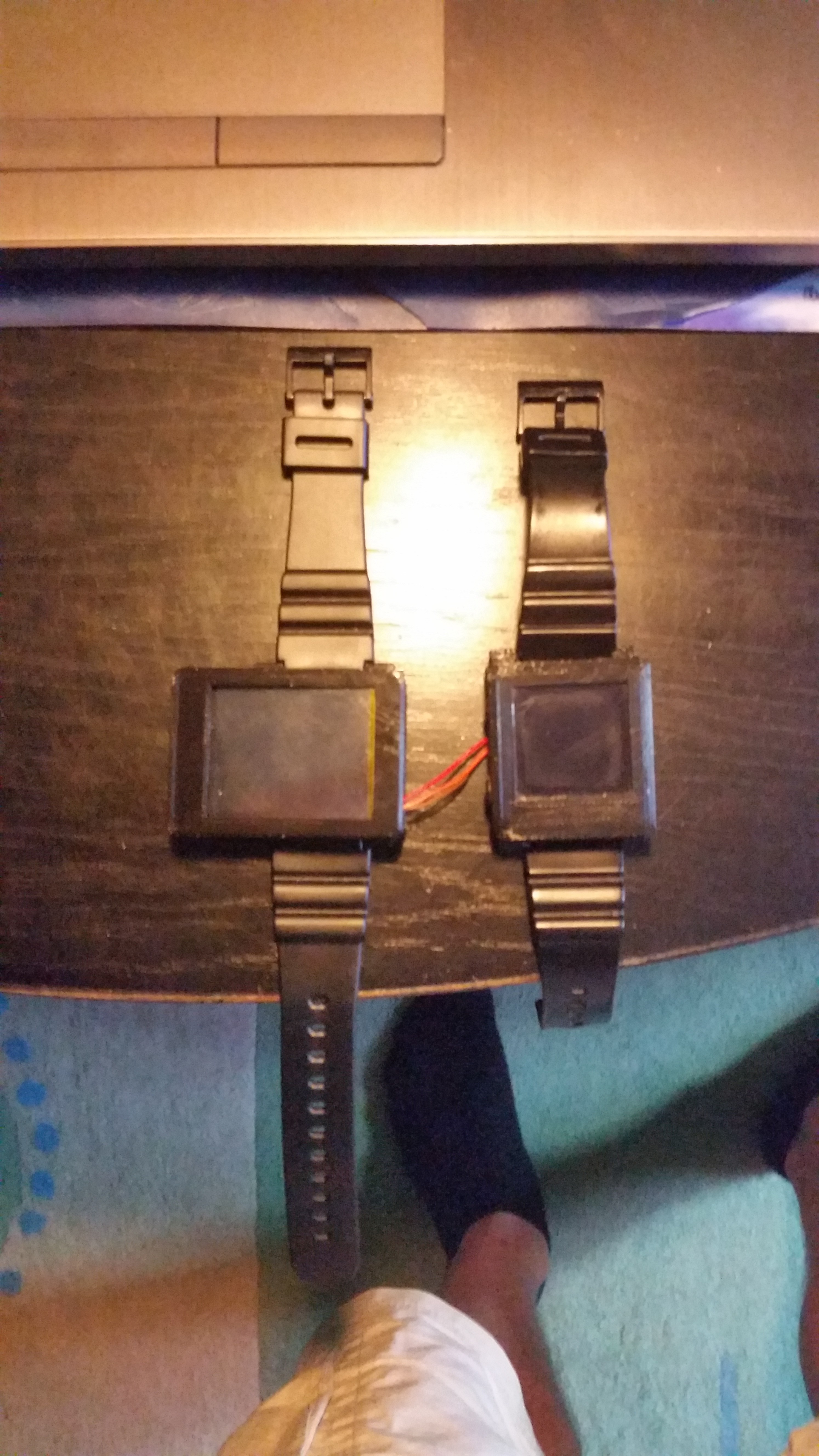
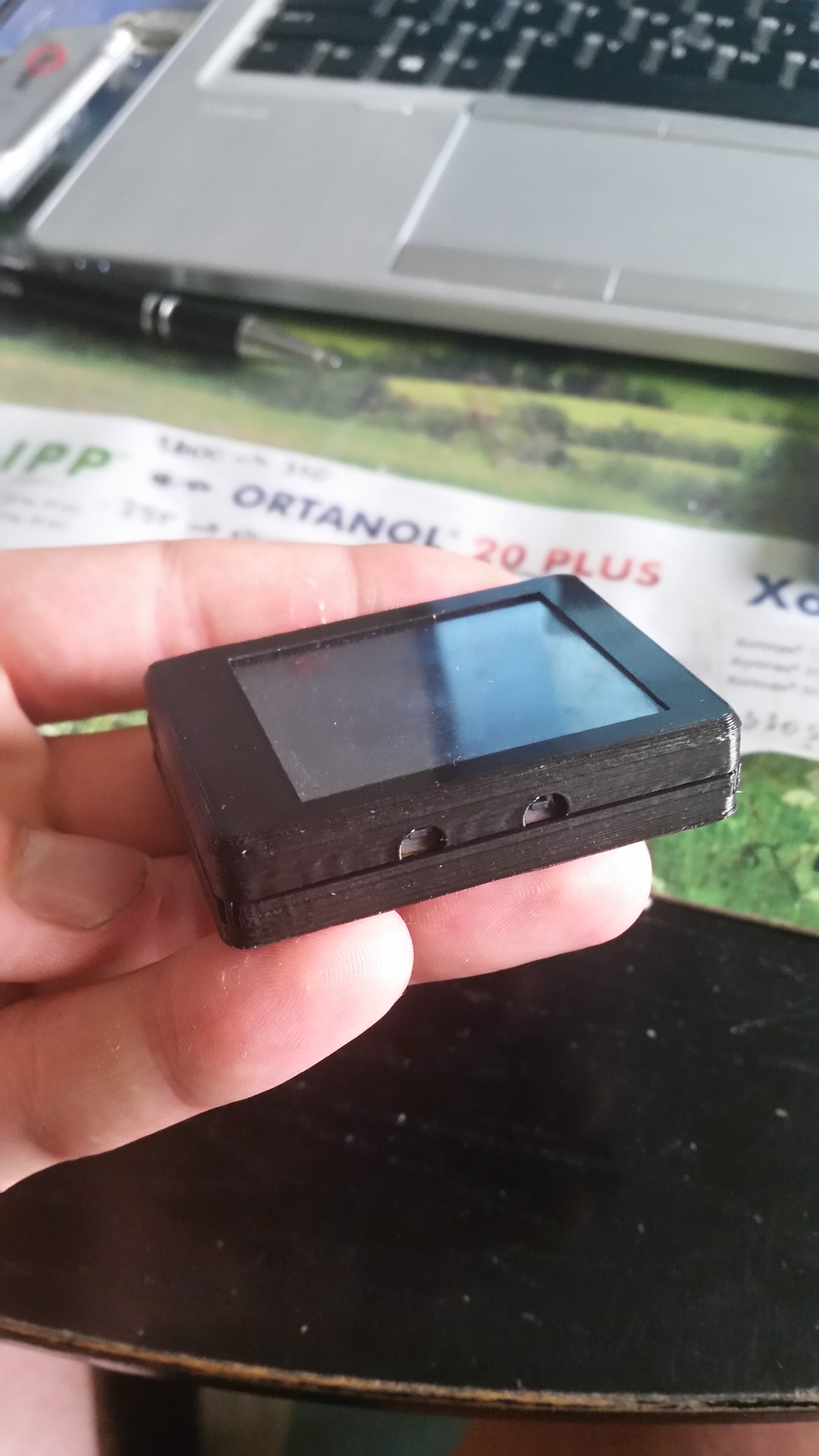
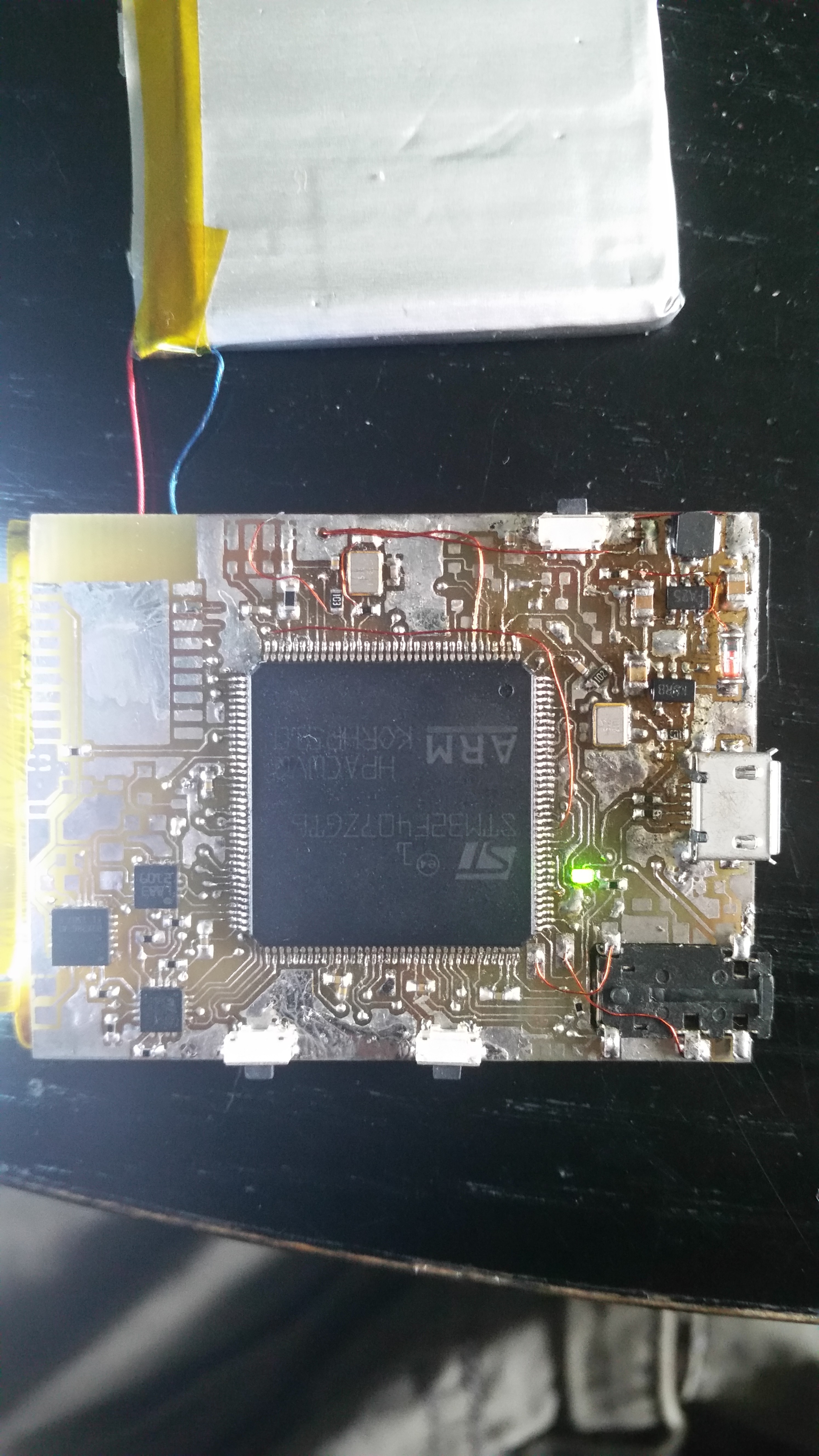
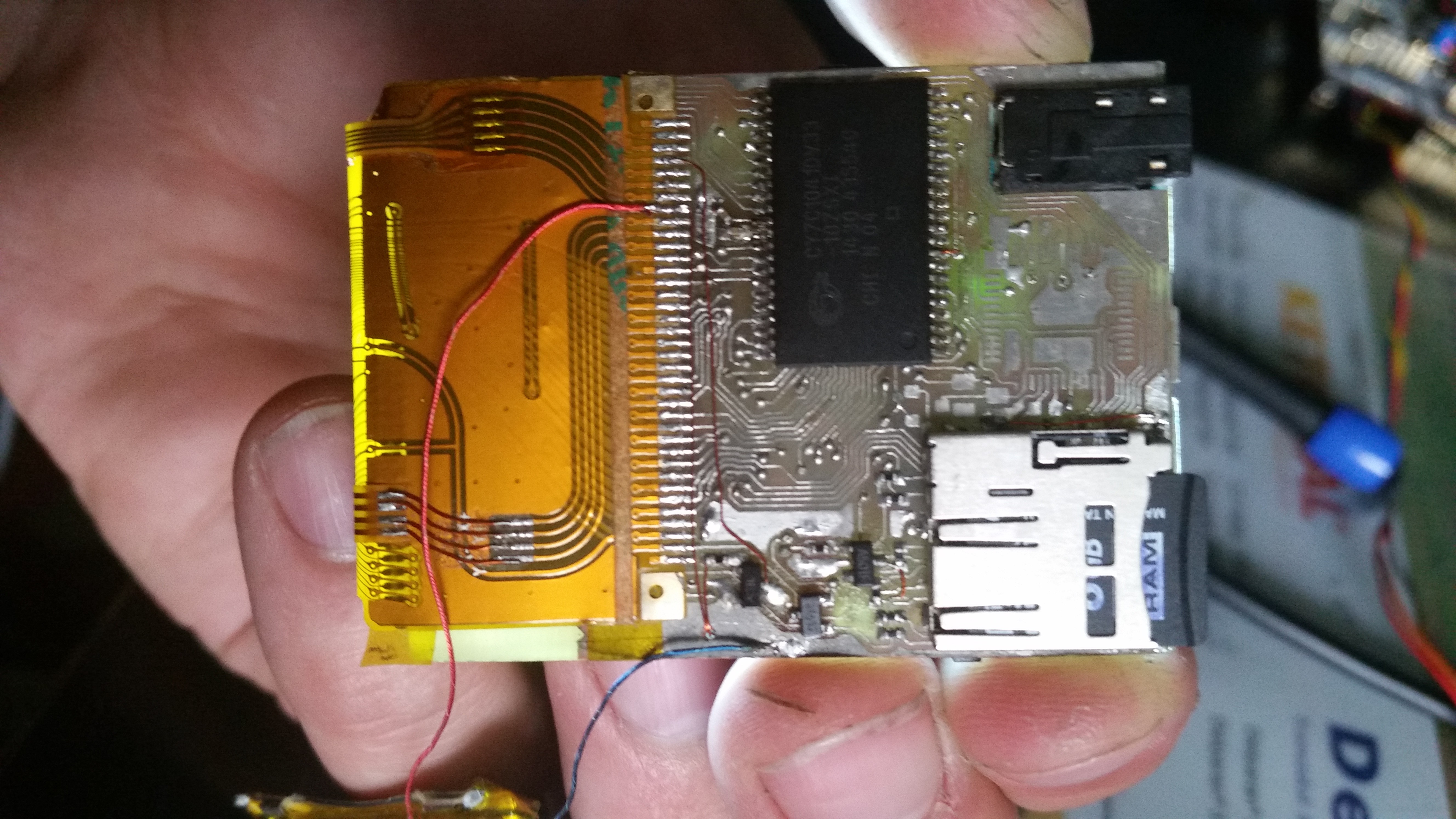 Baterry placement
Baterry placement